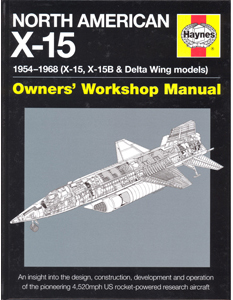The X-15 rocket plane is something of a historical anomaly when it comes to space. Although some pilots earned their ‘astronaut wings’ by making flights above the Karman Line, the notional 100km-high boundary to space, the X-15 is not classed as a spacecraft. It is, however, credited with being instrumental in the later development of the Space Shuttle. These two matters have made the X-15 a recognised part of space history, as indeed it should be.
This book tells the story of the historic spaceplane and some of the vehicles that preceded it, such as the fabled Dyna-Soar which took its name “from the descriptive function of dynamic soaring”, says the author. A final chapter covers “legacy concepts” based on X-15 technology and the book concludes with appendices on X-15 physical characteristics and a flight log, along with a useful index.
In common with other space-related ‘workshop manuals’ in the series, it is well illustrated with photos and diagrams, but there are fewer in colour than typical because of the age of the programme. It also has less of the workshop manual feel, as there are fewer detailed engineering drawings than usual, but this is balanced by an increase in photographic coverage.
It’s impossible to read any book on the X-15 without thinking of the Right Stuff, whether this means the book and film of the same name or the general impression that the test pilots and astronauts of the early Space Age were made from a different – and long-ago-broken - mould.
The author sums up the significance of the X-15 quite nicely by pointing out that the programme could not happen today: “its story is unique in that it opened a new frontier – and you can only do that once”.
Mark Williamson, Space Technology Consultant











